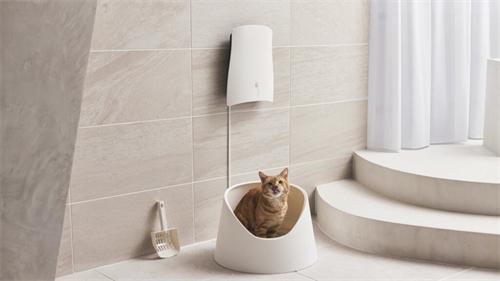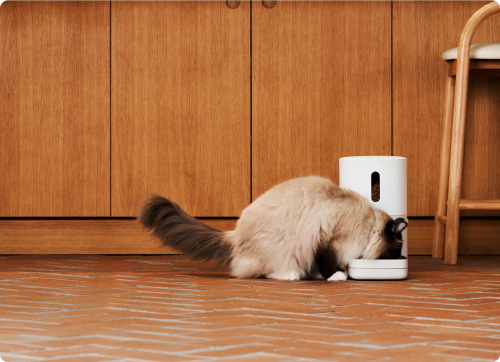Tech Products Worth Trying for Your Pet's Sleep, Stress, and More

Not long ago, health trackers were considered luxuries for humans—wristbands and smartwatches that counted steps, monitored sleep, and even warned us before we started feeling stressed. Today, the same wave of innovation is reshaping how we care for our pets.
From smart collars that track sleep cycles to harnesses that detect heart rate variability, pet wearable technology blends science with compassion. These small devices can help owners understand how their pets are feeling, how well they're sleeping, and whether they're experiencing stress or discomfort—all without any words.
The idea is simple yet powerful: if we can measure an animal's vital signs, we can better protect them. As technology improves, the insights we gather about our pets' physical and mental health become more precise each year.
The Evolution of Pet Wearables
The evolution from simple pet tags to smart health monitors reflects the deep integration of pets into the modern household. For decades, collars primarily served as identification—names, addresses, and phone numbers. Today, they're miniature data centers, capable of analyzing heart rate variability, body temperature, movement, and even subtle behavioral cues that signal stress.
This shift reflects trends in human health technology. As people begin tracking their own sleep and stress levels to improve their health, pet owners naturally want the same for their furry companions. This technology is rapidly evolving—driven by advances in biosensors, wireless connectivity, and artificial intelligence that can interpret animal-specific data.
Modern pet wearables typically use a combination of accelerometers, temperature sensors, and AI algorithms to track the following patterns:
Activity level: Time spent walking, playing, and resting.
Sleep cycle: How long the pet rests, how deeply it sleeps, and how often it wakes.
Heart rate and breathing rate: Key indicators of physical health and emotional state.
Behavioral patterns: Changes in scratching, grooming, or vocalizations can signal anxiety or distress.
By collecting this data over time, these devices can build a unique health profile for each animal. Owners and veterinarians can use this information to identify abnormalities, such as restlessness, fatigue, or an elevated heart rate, which can indicate illness or emotional distress.
How Wearable Technology Tracks Sleep and Stress?
Sleep quality and emotional stability are crucial components of animal health, yet they're often overlooked because pets can't communicate when they're feeling unwell. This is where wearable technology truly shines.
1. Understanding Your Pet's Sleep Patterns
A pet's sleep data is measured through movement and pulse rhythm. Sensors detect rest periods, sleep interruptions, and subtle movements like twitching or shifting posture. Over several days, these readings reveal a detailed picture of their pet's sleep cycle—the duration of deep and light sleep, and whether their rest is disturbed.
Insufficient sleep can indicate pain, anxiety, or environmental discomfort. For example, an elderly dog who suddenly wakes more frequently may be experiencing joint pain or an undiagnosed medical condition. Similarly, a cat who sleeps excessively may be experiencing fatigue due to illness or stress.
With ongoing tracking, owners can make evidence-based adjustments—changing bedding, temperature, diet, and even daily activity levels—to help their pet rest more comfortably.

2. Measuring Stress and Anxiety
Animals express stress differently than humans do. They may pace, hide, bark excessively, or simply appear lethargic. Wearable devices can translate these behaviors into measurable data.
By analyzing variables like heart rate variability, respiratory rate, and changes in movement, these devices can estimate an animal's stress level. Stress spikes can be associated with noise, travel, new environments, or separation from their owners. Over time, this data builds a behavioral profile that reveals the factors truly impacting a pet's emotional balance.
This is crucial for addressing common yet often misunderstood issues like separation anxiety, fear aggression, or noise sensitivity. With this specific data, trainers and veterinarians can design personalized care or training plans based on the animal's actual emotional reactions.
Why Pet Wearables Matter?
Pet wearables are more than just gadgets for curious owners; they are life-changing preventative care tools. Here are some of their greatest benefits:
1. Early Detection of Health Issues
Subtle changes in heart rate, breathing, or sleep can reveal hidden issues before overt symptoms appear. Through continuous monitoring, pet wearables can alert owners to infections, respiratory illnesses, or stress-related conditions early, allowing for effective intervention.
2. Stress and Anxiety Monitoring
Behavioral stress can be difficult to detect, especially in animals with stoic temperaments. Modern trackers analyze a pet's movements, vocalizations, and rest patterns to identify patterns consistent with anxiety or fear. This allows owners to adjust their pet's training, environment, or daily routine to maintain their pet's emotional balance.
3. Sleep Quality Analysis
Like humans, insufficient sleep can lead to health problems in pets. Devices that record sleep cycles can help diagnose sleep disorders caused by pain, anxiety, or environmental factors. Identifying these sleep disturbances helps ensure your pet gets restorative rest.
4. Weight and Activity Management
Obesity is a major health issue for modern pets. Wearable devices make it easy to set daily activity goals and monitor calorie consumption. Many wearables can be paired with smart feeders or nutrition apps, creating a complete ecosystem to help pets maintain a healthy weight.
5. Behavioral Insights for Training and Care
By tracking a pet's long-term behavioral patterns, wearable devices can help owners understand the impact of changes in their pet's diet, environment, or sleep schedule. A sudden increase in scratching could indicate allergies, while a decrease in playtime could signal early arthritis.

Choosing the Right Pet Wearable
With so many options on the market, choosing a device that meets both your pet's needs and your lifestyle is crucial. Here are some key factors to consider:
Comfort and Fit–The device should be lightweight and ergonomically designed for your pet's breed and size.
Battery Life–Look for a model that can last for days or even weeks on a single charge.
Water Resistance–This is crucial for pets that frequently swim or play outdoors.
Data Accuracy–Reliable sensors are crucial when it comes to generating meaningful health insights.
App Experience–Clear, user-friendly apps make data interpretation easier.
Subscription Fees–Some brands require monthly fees for GPS tracking or cloud storage, so it's worth factoring these into your budget.
By balancing these factors, pet owners can find a device that's both practical and effective for their pet's health.
The Future of Pet Health Technology
The future of pet wearables lies in advanced analytics and deeper integration with veterinary medicine. With the continued advancement of artificial intelligence and biometric sensors, pet tech will soon be able to:
l Predict health risks using machine learning models trained on millions of data points from other pets.
l More precisely detect emotional states by analyzing a combination of movement, temperature, and sound patterns.
l Connect directly to veterinary systems to provide real-time alerts for conditions like fever, dehydration, or irregular heartbeats.
l Integrate with smart homes to automatically adjust lighting, temperature, or white noise to improve comfort and reduce anxiety.
l Expand species coverage to develop devices for cats, birds, reptiles, and even livestock—each tailored to their unique physiology.
These advances will make veterinary care more proactive rather than reactive. Rather than waiting for illness to develop, healthcare professionals will be able to continuously track a veterinarian's health, just as doctors use smart medical devices to track human patients.
Pet wearables are more than just a passing tech fad; they represent the next frontier in animal health. By continuously monitoring key aspects of their pets' health and behavior, these devices foster a deeper connection between owners and their pets and help them make informed, compassionate care decisions.
Whether you're caring for an energetic puppy, a senior cat, or an anxious rescuer, the right wearable device can transform data into empathy—helping you understand what your pet is feeling, even if they can't express it out loud.
As technology advances, the message becomes increasingly clear: our pets deserve the same level of health insights as humans. Investing in a smart collar or tracker isn't just about convenience; it's about giving your pet the healthiest, happiest life possible.



